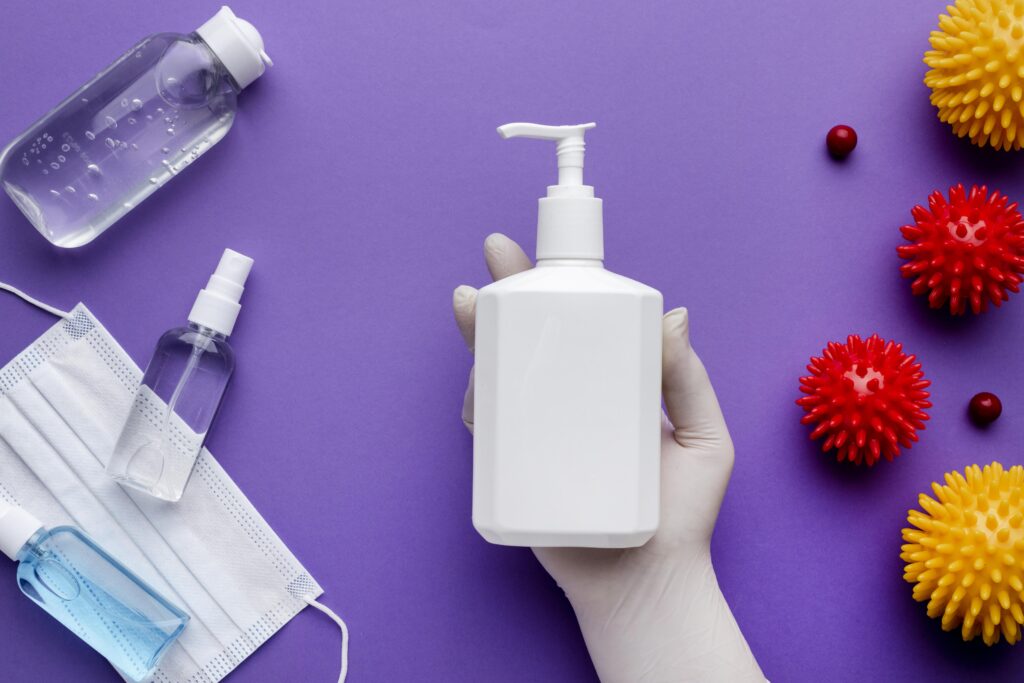SLS, also known as sodium lauryl sulfate, is a well-known name in the personal care industry and is frequently linked to its use in soaps and cleansers. The potential of this adaptable substance, however, greatly outweighs its conventional uses. SLS has made its impact in a variety of industries beyond producing a foamy lather in our daily shampoos and shower gels, demonstrating its versatility and versatile character.
Understanding Sodium Lauryl Sulfate
The highly effective synthetic surfactant sodium lauryl sulfate (SLS) is well known for its excellent qualities. It is an alkyl sulfate, which means that it has a hydrophobic lauryl group made of coconut or palm oil and a hydrophilic sulfate head. SLS’s versatility in applications is a result of its distinctive structure. Since it is a highly soluble crystalline powder in white or cream hue, it is a preferred option for many compositions. SLS is a well-known surfactant with the ability to lower surface tension, act as a foaming agent, emulsifier, and detergent, making it crucial in a variety of goods.
SLS is partially natural because it is primarily made from coconut oil or palm kernel oil. The manufacture is started by extracting fatty acids from various sources, particularly lauric acid. Lauric acid is changed into sodium lauryl sulfate via chemical reactions such as sulfonation and neutralization. There are different grades of this chemical, each designed for a particular application. Due to its great purity and safety, cosmetic-grade SLS is preferred for personal care products including shampoos, toothpaste, and cleansers. In contrast, cleaners employ industrial-grade SLS, which is frequently more concentrated. These various grades meet the various requirements of the many businesses that rely on sodium lauryl sulfate.
SLS in Personal Care and Beauty
SLS (sodium lauryl sulfate) is a key ingredient in many personal care products, particularly shampoos and conditioners. With the help of its great foaming abilities, it effectively cleans the hair and scalp by eliminating debris, oils, and pollutants. SLS produces a thick lather that improves the application process and ensures complete cleansing. To avoid overdrying, especially for those with sensitive scalps, it is crucial to balance the formulation by mixing SLS with the right moisturizing chemicals.
SLS in Household and Cleaning Products
Due of its outstanding surfactant characteristics, sodium lauryl sulfate (SLS) is a crucial component of dishwashing detergents. Due to its strong foaming action and emulsifying capabilities, it effectively breaks down grease and grime on dishes. SLS helps to remove dirt from the surface, improving the effectiveness of dishwashing. Additionally, because of its biodegradability, which matches rising demand for environmentally friendly cleaning products, it is frequently used in contemporary dishwashing formulas.
Given its effective cleaning properties, SLS is frequently used as a component in laundry detergents and stain removers. It effectively cleans stains, grease, and grime out of fabrics. SLS functions as a surfactant, allowing soils to be suspended in the wash water and preventing their re-deposition onto clothing. Due to its foaming abilities, the detergent is distributed evenly, resulting in complete cleaning. SLS also aids in stain eradication, improving the general effectiveness of washing products.
SLS in the Industrial and Pharmaceutical Sectors
SLS, or sodium lauryl sulfate, has many uses in the pharmaceutical sector. It can be used as an excipient to help poorly soluble medicines dissolve more easily, assisting in medication delivery. Additionally, SLS is used to stabilize and improve the penetration of active pharmaceutical components into the skin when making topical creams and ointments. It is a useful ingredient in many pharmacological compositions thanks to its emulsifying qualities.
SLS has particular uses in industrial settings. Clay and shale are broken down in oil and gas exploration to make drilling easier. Furthermore, SLS helps with degreasing and coloring in the textile sector. SLS’s flexibility and potential in upcoming industrial applications have been demonstrated by recent advancements that investigated employing it as a surfactant in enhanced oil recovery procedures.
Challenges and Controversies
Use of sodium lauryl sulfate (SLS) has sparked some controversy, mostly because of the risk of skin irritability. Especially in high quantities, some people with sensitive skin may feel mild discomfort. Additionally, there have been discussions on its long-term impact on skin health, leading people to look for products with less or no SLS.
Finding environmentally suitable SLS substitutes is a top priority given the rising environmental consciousness. Customers are becoming more attracted to products that use natural or plant-derived surfactants, encouraging sustainability and minimizing their environmental impact. Manufacturers are being inspired to innovate and create products that keep effectiveness while being kind to the skin and the environment by the shift toward greener options.
Conclusion
SLS (Sodium Lauryl Sulfate) is a common and adaptable chemical used in many different sectors. Because of its emulsifying, cleansing, and foaming abilities, it is a crucial ingredient in personal care, home goods, and other products. The versatility of SLS in increasing product performance is obvious, from shampoos to industrial uses.
Exploring the vast array of applications for SLS can be enlightening. SLS is expanding outside the realm of conventional cleaning solutions as consumers and industry keep innovating and diversifying. Pharmaceuticals, business uses, and other areas are all within its potential. Embracing this variation enables us to access the full range of SLS applications and observe its changing influence on a wide range of products.
Image by freepik via https://www.freepik.com/

